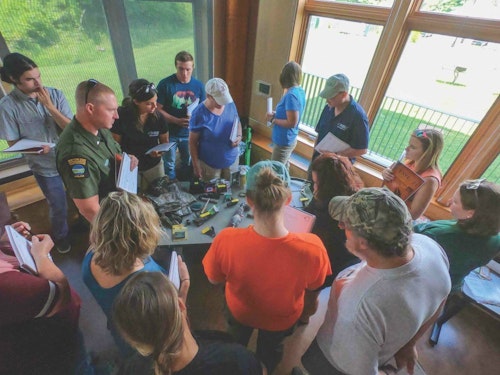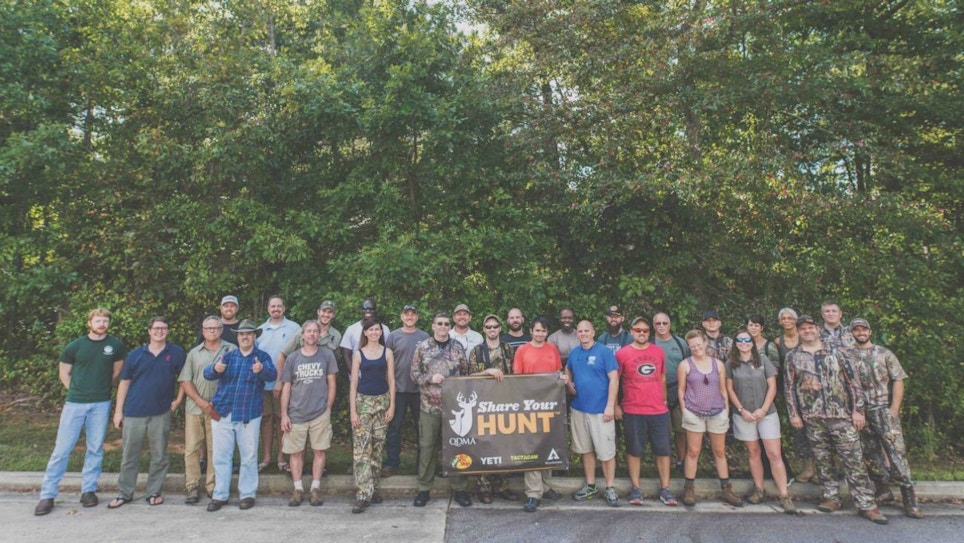Bowhunters dedicate time, effort and money to scouting, practicing, buying gear and preparing for spring and fall hunts. They also endure early morning wake-ups, harsh weather, rugged terrain and long nights pursuing game and hauling it home.
Although many bowhunters view all these things as necessary challenges, many nonhunters consider them obstacles.
Ask nonhunters why they don’t hunt, and you’ll hear a catalog of answers. Some say they lack time or money. Others say they fear the dark or the disapproval of family and friends. Others lack access to hunting land, or basic knowledge of hunting practices. Others don’t understand regulations, or they can’t fathom taking an animal’s life. Meanwhile, some folks simply don’t know how or where to start.
Kristen Black is manager of communications and human dimensions at the Council to Advance Hunting and Shooting Sports. She said, “Barriers to hunting reduce funding for conservation through the Federal Aid in Wildlife Restoration Act, aka the Pittman-Robertson Act. Without hunters buying new and replacing old equipment, conservation would go largely unfunded. We would lose parts of the natural world we value.”
That’s why wildlife agencies, conservation organizations and others in the hunting industry launched R3 programs to recruit, retain and reactivate hunters. But converting nonhunters to hunters requires an understanding of what holds them back.
Black encountered barriers during her journey into archery and bowhunting, including physical limitations, lack of time, money, knowledge, confidence and land access. She also struggled with killing an animal, even though she knows hunting helps manage diseases and deer populations while providing humane ways to acquire meat. “Almost all barriers are the ones I claim,” she said.
Barriers differ by person and age group. An 18-year-old college student might have time for weekend bowhunts, but no money for licenses or equipment. In contrast, a 30-year-old mother might have money for gear, but little time to hunt or practice shooting.
Jamie Cook, Pheasants Forever’s state coordinator in Iowa, works with the state’s Department of Natural Resources to solve such ever-changing variables. Bowhunting intrigued him at 17, and he bowhunted sporadically during college without success. He had a mentor and place to hunt, but lacked the knowledge and confidence to pursue it.
Cook stopped hunting at 24 when he married and took a full-time job. He still had his hunting gear, but he also had misconceptions about “dangerous” public lands. After realizing those perceptions were false, he started gun hunting at age 33 to obtain organic free-range meat. Now 39, Cook is excited to bowhunt again for the first time in 15 years.
Looking back, Cook realizes the barriers he faced changed over time, but he never lost his desire to hunt. Cook thinks apathy is hunting’s most significant barrier, but that desire destroys most barriers.
“You’ll reach a point where your motivation to hunt becomes so great that you’re not concerned about obstacles,” Cook said. “When you reach that point, barriers won’t be an issue. You’ll find ways to overcome them. You’ll invest, buy equipment, drive farther to hunting locations, and get over the hiccups you faced.”
Others want to hunt, but they’re too nervous to tackle it alone. Lauren Duckworth of Georgia is 23, and she’s been interested in bowhunting since age 12 but hasn’t yet tried it.
Duckworth says the men in her family hunt ducks and bowhunt deer. She’s watched them return from North Dakota with game meat and photos documenting their adventures. Each image she saw and wild game meal she ate stoked her intrigue for bowhunting. She wants to shoot archery, but wants a good mentor.
Duckworth said, “I never went with my family because it was always a ‘guy’s trip.’ This is a true barrier for many people, specifically girls. I’m not a feminist, but it’s more difficult for women to hunt because of ‘guy trips’ and having no one to teach them.”
Duckworth says her greatest fear about starting archery is making mistakes, like getting the wrong equipment. She wants a mentor who makes her feel comfortable.
That’s where ATA members and the outdoor industry can help. Cook says industry members can provide newcomers guidance, knowledge and support.
“Americans are busy,” Cook said. “We have to compete for people’s time, and make archery fun and enjoyable. If people don’t participate, wildlife conservation is in jeopardy of losing funds, but retailers and manufacturers might also lose their businesses.”
Black says she opposed hunting most of her life, so she knows it’s possible to change nonhunters’ minds and behaviors. She says science, education and communication help newcomers understand and embrace hunting.
To that end, let’s review some tips for introducing newcomers to archery and bowhunting.
Communicate
Did you know 84 percent of Americans approve of hunting for meat, according to the 2019 National Shooting Sports Foundation report on attitudes toward hunting, fishing and trapping? Meanwhile, only 4 percent of Americans 18 or older bowhunted in 2015, according to a recent Archery Trade Association survey.
That means the United States has millions of potentials bowhunters, but we need to find them among our many friends, customers, coworkers and family members. Some are likely interested in hunting, but afraid to ask for help or start the adventure alone. When finding someone who’s interested, point them to archery shops, bowhunting clubs or certified programs, or offer to help them get started.
Be a Mentor
Bowhunting is exciting, but the more support beginners receive, the more likely they’ll stick with it. Mentors can guide and encourage newcomers through hands-on learning to feel confident shooting, and making smart, ethical decisions.
Mentors teach skills, answer questions, offer advice, and serve as positive friends and role models. Mentoring can be as fun, rewarding and sustainable as hunting. Don’t wait. To share your love of bowhunting, become a mentor.

Be a Host
Give newcomers a place to start by offering lessons, teaching classes, or hosting events and leagues. These opportunities provide safe, welcoming places for beginners to learn, ask questions, and create long-term relationships.
Also refer them to classes taught by staff from wildlife agencies or parks-and-recreation departments. Many states offer “Field to Fork,” “Gourmet Gone Wild,” or “Hunt. Fish. Eat.” programs that teach basic skills to those with little or no hunting background. Other groups, like the National Bowhunter Education Foundation, teach courses that help students start bowhunting safely and effectively.
And the ATA’s Explore Bowhunting program helps archers transition into bowhunting. ATA members can contact Nicole Nash (nicolenash@archerytrade.org), ATA’s manager of range and retail programs, to obtain a free copy of the Explore Bowhunting curriculum.
Work With Partners
If you lack the time or space to host classes or events, consider partnering with a like-minded organization to attract newcomers. The ATA collaborates with individuals, groups and organizations to build sustainable customer bases by recruiting participants, promoting events, and removing entry barriers. So can you. Retailers and manufacturers can support programs, exhibit at community events, speak at archery events, or collaborate with others on classes, resources or projects.
Partnering with other companies or organizations helps you boost your business’s profile, attract new customers, and generate more revenue while making newcomers feel welcome.
If everyone does their part, we can identify and remove participation barriers, introduce more newcomers to archery and bowhunting, and grow the sports for the benefit of conservation and the outdoor industry.







